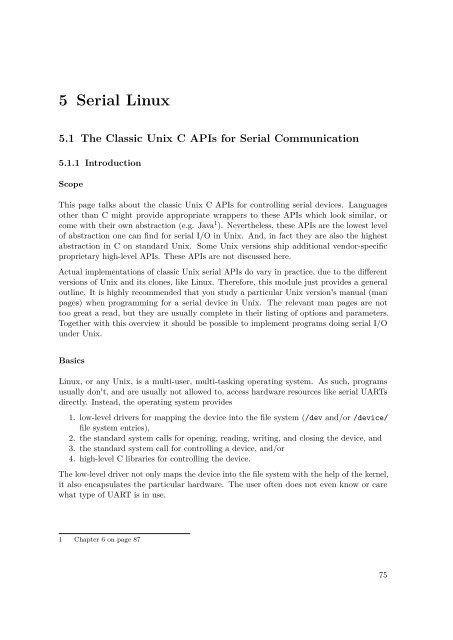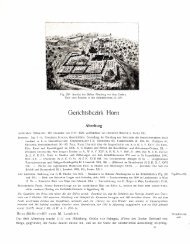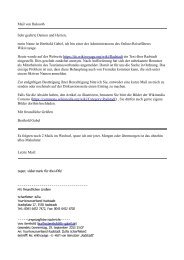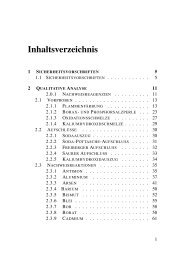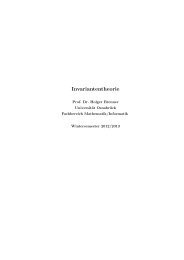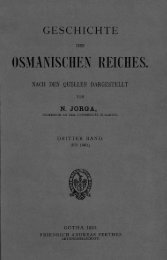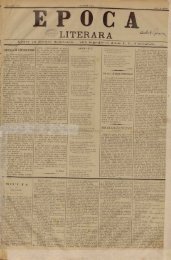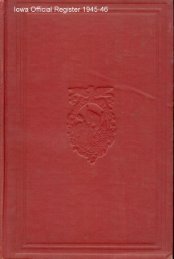Serial Programming - upload.wikimedia....
Serial Programming - upload.wikimedia....
Serial Programming - upload.wikimedia....
Create successful ePaper yourself
Turn your PDF publications into a flip-book with our unique Google optimized e-Paper software.
5 <strong>Serial</strong> Linux<br />
5.1 The Classic Unix C APIs for <strong>Serial</strong> Communication<br />
5.1.1 Introduction<br />
Scope<br />
This page talks about the classic Unix C APIs for controlling serial devices. Languages<br />
other than C might provide appropriate wrappers to these APIs which look similar, or<br />
come with their own abstraction (e.g. Java 1 ). Nevertheless, these APIs are the lowest level<br />
of abstraction one can find for serial I/O in Unix. And, in fact they are also the highest<br />
abstraction in C on standard Unix. Some Unix versions ship additional vendor-specific<br />
proprietary high-level APIs. These APIs are not discussed here.<br />
Actual implementations of classic Unix serial APIs do vary in practice, due to the different<br />
versions of Unix and its clones, like Linux. Therefore, this module just provides a general<br />
outline. It is highly recommended that you study a particular Unix version's manual (man<br />
pages) when programming for a serial device in Unix. The relevant man pages are not<br />
too great a read, but they are usually complete in their listing of options and parameters.<br />
Together with this overview it should be possible to implement programs doing serial I/O<br />
under Unix.<br />
Basics<br />
Linux, or any Unix, is a multi-user, multi-tasking operating system. As such, programs<br />
usually don't, and are usually not allowed to, access hardware resources like serial UARTs<br />
directly. Instead, the operating system provides<br />
1. low-level drivers for mapping the device into the file system (/dev and/or /device/<br />
file system entries),<br />
2. the standard system calls for opening, reading, writing, and closing the device, and<br />
3. the standard system call for controlling a device, and/or<br />
4. high-level C libraries for controlling the device.<br />
The low-level driver not only maps the device into the file system with the help of the kernel,<br />
it also encapsulates the particular hardware. The user often does not even know or care<br />
what type of UART is in use.<br />
1 Chapter 6 on page 87<br />
75


